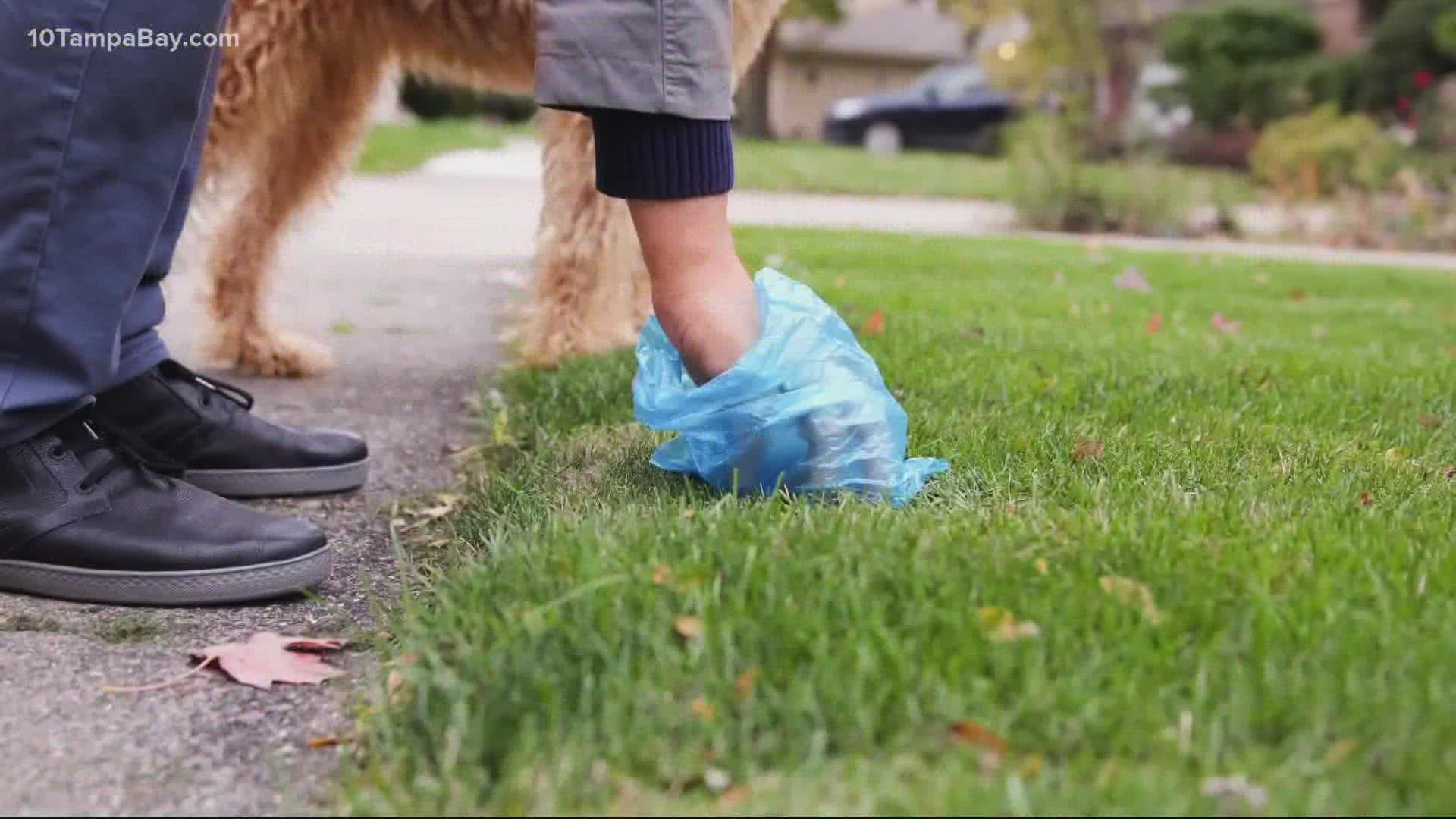ST. PETERSBURG, Fla. — If you’re a dog owner, that little plastic dog waste bag is probably your second best friend.
However, most of those small bags that are marketed as “eco-friendly” or “biodegradable” actually may not be at all.
When it comes to using plastic, the United States takes the lead in generating the most plastic trash out of any other country on the planet. But while a small change to limit our use of plastic or shop "green" in our everyday lives can make a difference, some companies are banking on your good intentions.
One example of that is with those popular dog waste bags. According to the Federal Trade Commission, more than a dozen creators and marketers of dog waste bags were notified that their so-called “biodegradable” products may have been misleading to consumers.
"Some dog bags that are labeled biodegradable actually are not biodegradable," says Kristina Moreta, the education and events coordinator with Keep Tampa Bay Beautiful. "They can be falsely labeled. So, unfortunately, it does kind of get the consumer that wants to do something good and tries, to be duped into buying a bag that isn’t biodegradable.”
When a product claims it’s biodegradable, it’s telling the consumer it will completely break down into its natural components within one year after disposal. However, most bags take significantly longer to break down, while some may not even break down at all. Unfortunately, the problem only gets worse when these waste bags end up in our landfills.
“A lot of plastics in the landfills take anywhere from 10 to 1,000 years to decompose and so, obviously, that’s taking a lot of our landfill space," Moreta said.
The reason making sure how we dispose of those little poop-filled bags is important is because some biodegradable plastics need oxygen to break down. If they end up in our landfills, they can get mixed in and compressed with other trash, never allowing them to completely deteriorate.
Moreta shares a helpful hint, “The ASTM label on the actual box will help consumers make sure they’re actually buying a biodegradable bag instead of a falsely advertised bag.”


So why is this a problem? Both creating and disposing of plastics generate greenhouse gasses, which are heat-trapping gasses that warm our atmosphere. So if these “biodegradable” materials aren’t breaking down or doing so at a significantly slower rate, this further contributes to the impact on our food, our water and our atmosphere.
Now to the question you're likely asking yourself, what can I do to pick up after my pup while staying eco-friendly?
Things you can do:
- Use a dog-waste-only composting bin. While this should never be used for growing food or edible plants, it can be great for a decorative garden.
- Transport the waste to an industrial composting facility that accepts pet waste, if the option is available in your area.
- Flush it! In fact, the Environmental Protection Agency recommends it. You’ll just want to check with your city’s sewage guidelines, and never flush pet waste into a septic tank.
But if you want to completely cut out the plastic bags, using a hand-held scoop or shovel to transfer dog waste from the ground to a composting bin or toilet would be the most Earth-friendly option.
“Just [make] sure to pick up after your pet. It’s going to do a lot more damage sitting there as pet waste," Moreta said. "Not only does it smell bad and your neighbor is going to give you a really mean dirty look, but it’s also not good for us and it’s not good for our waterways either.”

